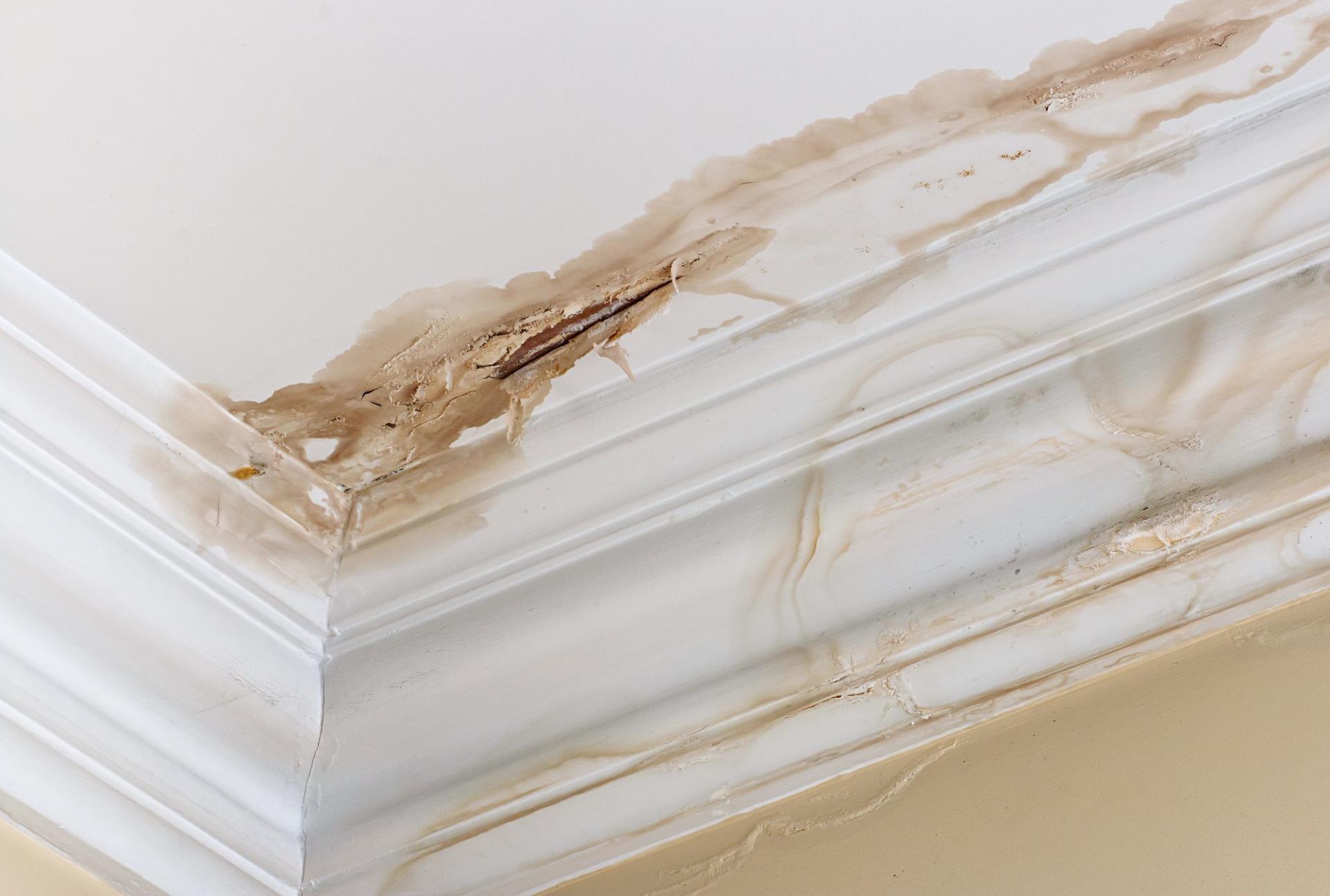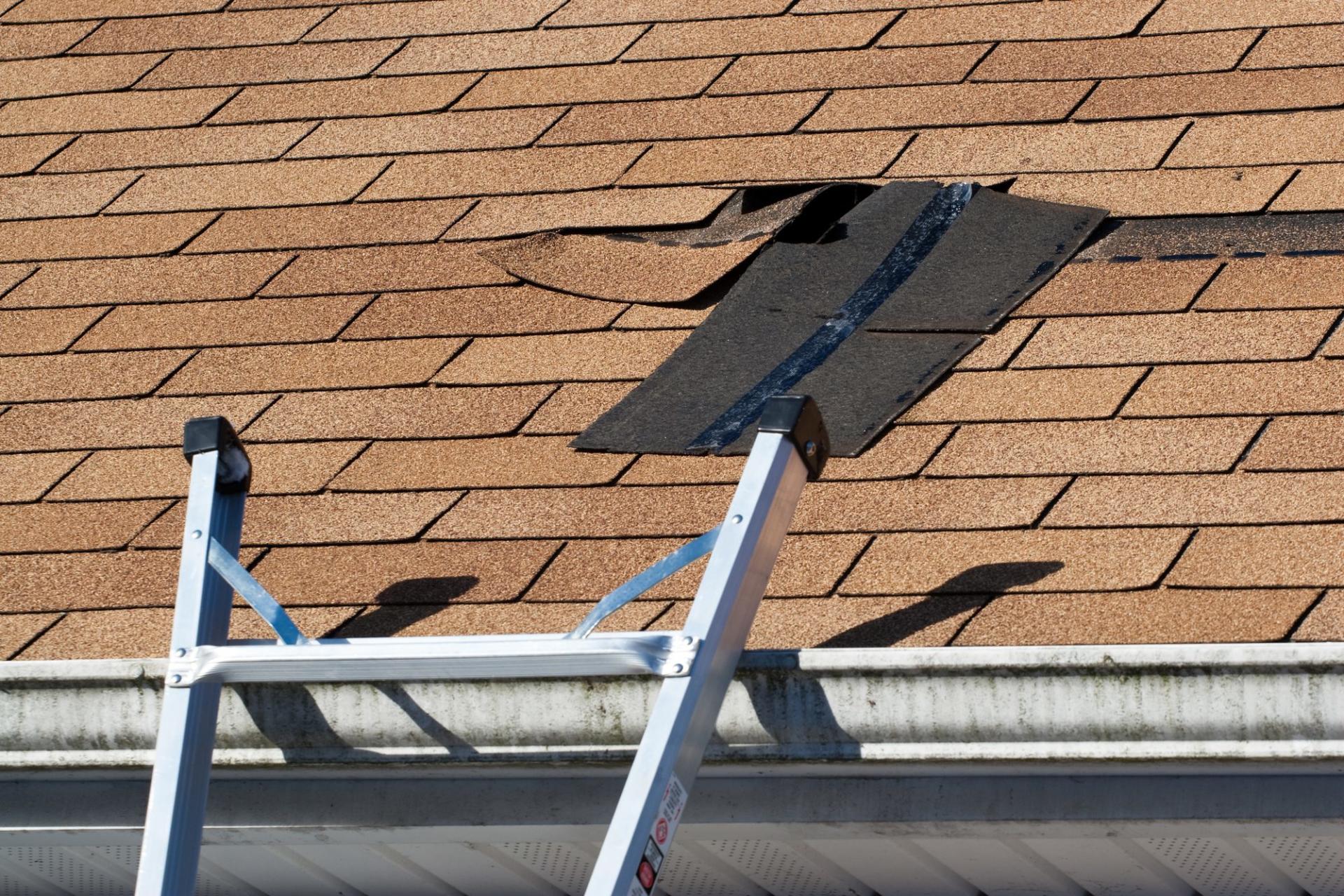Types of Roof Damage
From wind to water, your roof can go through a lot during storm season, leading to problems in the interior of your home or even structural issues. Here are the leading causes of roof storm damage in the New Jersey area:
- Standing Water: The average annual precipitation in New Jersey is between 43 and 47 inches. Much of this rain falls during summer or winter storms. If a roof does not have good drainage, or if there is an unprecedented amount of rain in a short period of time, standing water can cause damage to the underlayment of the roof deck. This can leave the home exposed to water damage. It can also provide a perfect breeding ground for mold and mildew.
- High Winds: Tropical cyclones that have sustained winds of up to 73 mph are classified as tropical storms. Once the sustained winds increase to at least 74 mph this type of storm is classified as a hurricane. Both gale-force and hurricane-force winds can rip the shingles off a roof which can leave the underlayment, waterproofing materials, or roof deck exposed to the rain, potentially leading to further damage.
- Hail and Debris: When hail or debris strike a roof with force, individual shingles or roofing tiles can become damaged. Hail can cause cedar shake or slate roofing to crack. Hailstones can also dent copper roofing and remove the granules from asphalt shingles. All of these scenarios can leave the roof underlayment exposed.



Assess The Damage
The first step following a big storm is to assess the damage. It is not advisable for a homeowner to climb on their roof – leave that task for a professional. Here are a few ways you can safely do an initial assessment of any damage to your home’s roof before calling in a trusted roof contractor:
- Walk the perimeter. In some cases, simply walking the perimeter of your house while looking up at the roof can reveal visible storm damage. If you see ripped, torn, missing or dented roofing tiles, make a note of them on your phone or a piece of paper and be sure to also take photos of the damage with your phone.
- Assess the area outside your home. If you notice fallen tree limbs, damaged outdoor furniture, damage to your deck or patio or missing fence posts, chances are the storm affected your roof.
- Examine windows, gutters and vents. Check windows for cracks, ripped window screens or damaged weather-stripping. Other outside roof fixtures such as gutters, vents or gables should also be checked for dents, cracks or other damage.
- Check the ceiling and attic. In addition to checking the exterior of your home, it is also a good idea to walk around the entire interior of your home and look for any visible signs of water leaks. Even if everything looks fine from the outside, there could be concealed roof damage that could result in interior leaking. Be sure to use a flashlight when checking the dark corners of the attic in order to fully inspect for potential damage.
Contact Your Homeowners Insurance Company
If you have identified that your roof or other areas of your home have sustained damage, it is important to contact your home insurance company right away. If you wait too long, it is possible that the insurance company will not cover the damage. Before you call, make notes about the dates and extent of the damage and also take photos. When you call the insurance company, your provider will walk you through the steps of how to file a claim. It is very likely that they will request that you forward photos prior to an assessor coming out to the property.
Hire a Trusted Roofing Contractor
After a large storm, roofing contractors and roofing repair companies are often quite busy. Unfortunately, “fly-by-night” businesses or less experienced tradespeople sometimes see an opportunity and start advertising roofing repair services. Be wary of any company that offers deals or incentives that sound too good to be true, or pressures you into signing a contract immediately. It is very important to select an experienced roofing contractor. Be sure that the roofing company you select is fully licensed and insured, check credentials, read online reviews and ask for a couple of referrals. A professional roofing contractor will:
- Provide a full and complete inspection to uncover any damage that your roof may have experienced during a weather event.
- Arrive when they say they will or will call you if they are running late.
- Provide a detailed, accurate estimate, including all of the necessary information for your insurance claim.
Alte Exteriors is a second generation, family-owned and operated New Jersey roofing company. Our experienced roofing consultants are knowledgeable about the best quality roofing and construction materials and processes. Our clients trust us to accurately assess roofing damage and recommend the best materials and methods for repairs. Contact Alte Exteriors today for help with storm damage roof repair.

